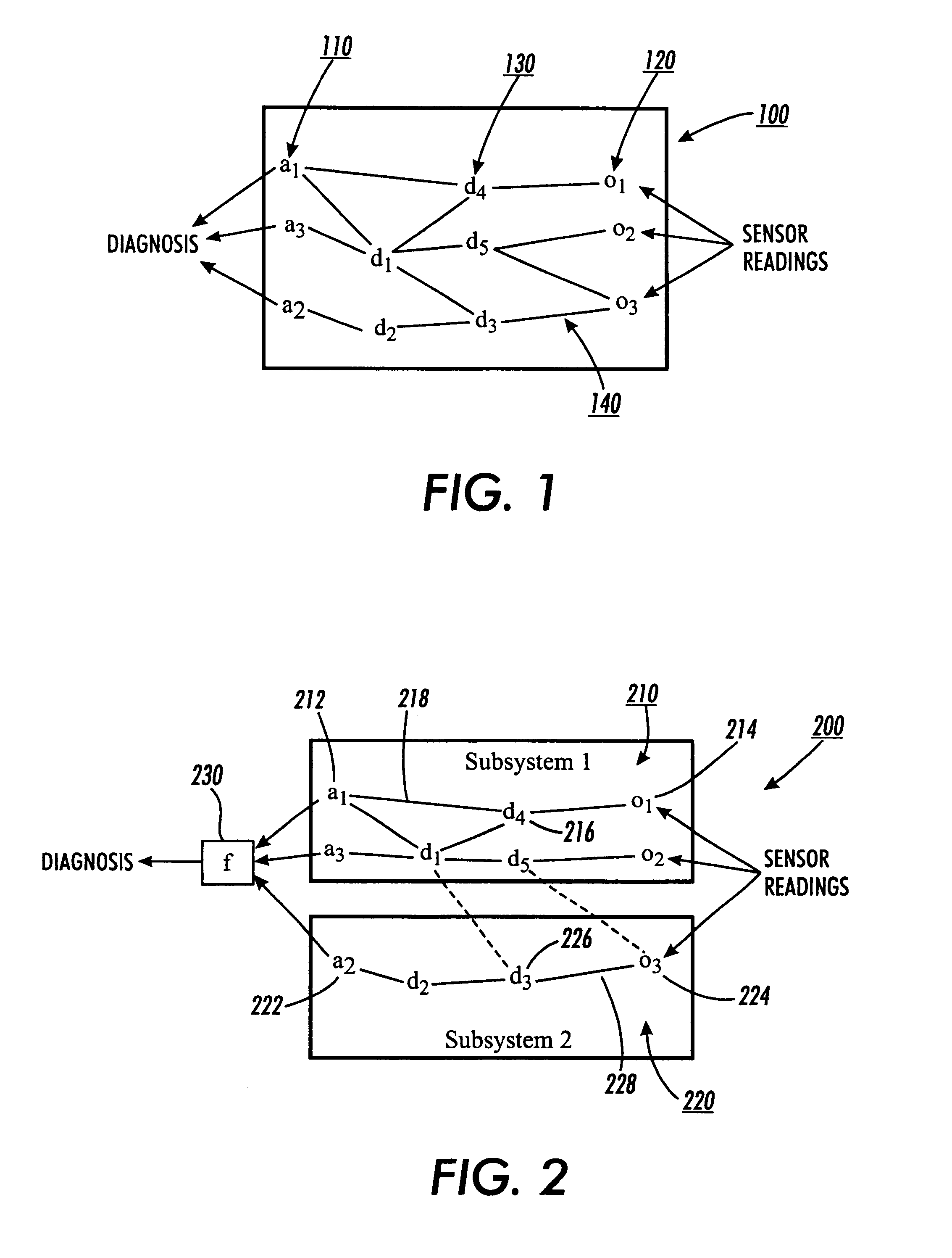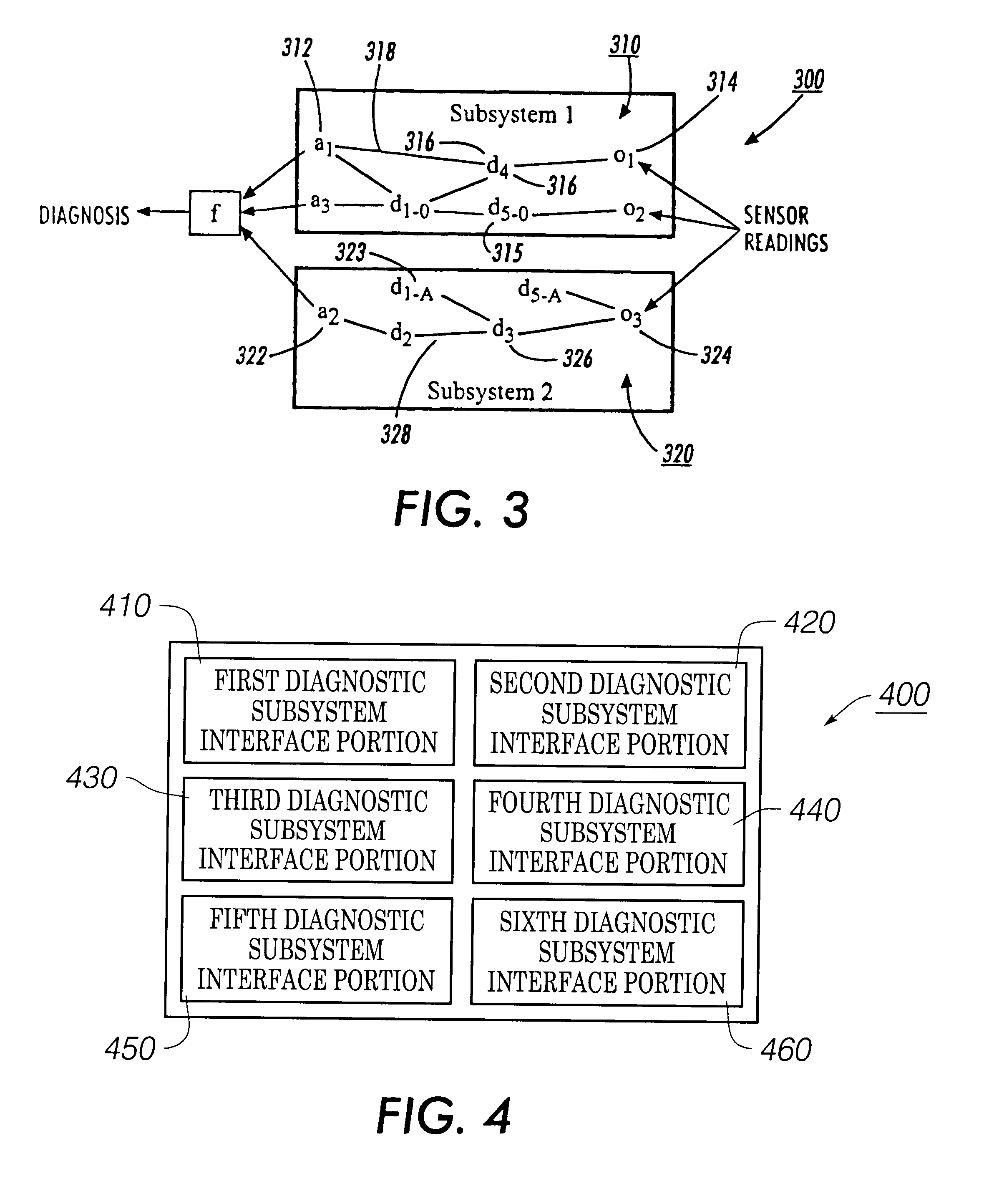Systems and methods for distributed algorithm for optimization-based diagnosis
a distributed algorithm and optimization-based diagnosis technology, applied in the field of systems and methods for processing distributed information, can solve problems such as significant performance and development bottlenecks
- Summary
- Abstract
- Description
- Claims
- Application Information
AI Technical Summary
Problems solved by technology
Method used
Image
Examples
first embodiment
FIG. 2 illustrates a distributed optimization-based diagnostic system 200 in accordance with the invention. As shown in FIG. 2, the distributed optimization-based diagnostic system 200 contains a first diagnostic subsystem 210 and a second diagnostic subsystem 220. The distributed optimization-based diagnostic system 200 is used to diagnose faults in a system to be diagnosed. The system to be diagnosed includes two distinct subsystems, where each subsystem to be diagnosed corresponds to or is modeled by, one of the first and second diagnostic subsystems 210 and 220. The first diagnostic subsystem 210 contains one or more assumption variables 212, one or more observation variables 214, and zero, one or more dependent variables 216. The variables are related by one or more constraints 218.
Similarly, the second diagnostic subsystem 220 contains one or more assumption variables 222, one or more observation variables 224, and zero, one or more dependent variables 226, all related by one ...
second embodiment
FIG. 3 illustrates a distributed diagnostic system that provides optimization-based diagnosis in accordance with the invention. As shown in FIG. 3, the distributed system 300 is similar to the distributed diagnostic system 200 of FIG. 2. Specifically, in FIG. 3, the distributed system 300 contains a first diagnostic subsystem 310 and a second diagnostic subsystem 320. The first diagnostic subsystem 310 contains one or more assumption variables 312, one or more observation variables 314, and one or more dependent variables 316. The assumption, observation and dependent variables 312, 314 and 316 are related by one or more constraints 318.
The second diagnostic subsystem 320 contains one or more assumption variables 322, one or more observation variables 324, and one or more dependent variables 326, all related by one or more constraints 328.
The first diagnostic subsystem 310 also contains one or more pseudo-observation variables 315. A pseudo observation variable 315 enables a local d...
PUM
 Login to View More
Login to View More Abstract
Description
Claims
Application Information
 Login to View More
Login to View More - R&D
- Intellectual Property
- Life Sciences
- Materials
- Tech Scout
- Unparalleled Data Quality
- Higher Quality Content
- 60% Fewer Hallucinations
Browse by: Latest US Patents, China's latest patents, Technical Efficacy Thesaurus, Application Domain, Technology Topic, Popular Technical Reports.
© 2025 PatSnap. All rights reserved.Legal|Privacy policy|Modern Slavery Act Transparency Statement|Sitemap|About US| Contact US: help@patsnap.com



